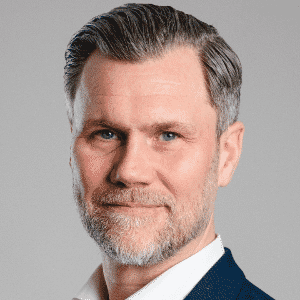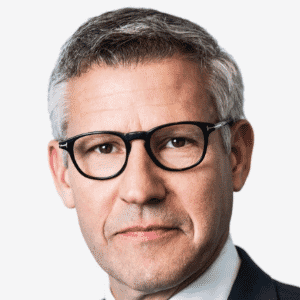 Credit: Rita Michelon / Pixabay
Credit: Rita Michelon / PixabayThe Evolution of the Housing Sector in Milan and Other Italian Cities
Top executives from the Italian real estate market met online to discuss the state of the housing sector in the country
March 30, 2022Real Estate
The GRI Club hosted an eMeeting on February to address the current situation of the housing sector in Italy, particularly in Milan. To moderate the session, the event had the contribution of GRI Italy Club member Stefano Keller, Managing Director and Partner at LFPI Italia Reim.

The session began with a comment on the protagonism of Milan in the evolution of the segment. Presently, the city is home to 33% of investments in the residential sector and is being considered a testing ground for a range of real estate sub sectors such as student housing, BTR, social e senior housing, home offices e short term rentals.
Attendees shared their thoughts on the consequences of the pandemic in the segment and talked about how remote work had increased the demand for more space, comfort, flexibility, amenities and the community. The forecast for the decade ahead confirms product centered demand as a result of the sanitary crisis, as well as a general concern with the environment.
Commuting to work is becoming less popular by the day as the real estate market is feeling the shift in priority and is investing in alternative housing projects, creating spaces that can be both functional and sustainable. Secondary cities are on investors’ target as well, as city centers were emptied due to Covid-19.
The residential sector accompanies every person's life in different stages, beginning with student housing and ending with senior living. Although these are completely diverse markets and assets within real estate, they respond to the same unique need of living.
Naturally, there are many external factors, both social and cultural, that contribute tremendously to market variations. Demographic factors like the aging of the population or financial issues such as the rising cost of living and of construction while salaries have stayed more or less the same are all to be considered when analyzing trends and movements.
According to predictions, Italy’s population will be 33% over 65 years old by 2035. Younger generations are not allocating their savings in real estate as it was traditionally done by their parents and grandparents before them. Families are getting smaller, especially in larger cities. All these changes in behavior contribute to a shift in demand and the built environment has the mission to figure out how to stay relevant and provide the customer with the product they need.
Executives discussed the concept of polycentrism, which is the formation of small islands of services inside a larger city, as it is becoming a trend, along with renting. Italy has been a country of owners in the past, but that is also changing as the younger populations are more interested in flexibility, something that was accelerated by the pandemic.
The meeting was attended by investors, developers, operators and asset owners and they addressed strategies to remain competitive and ensure the supply matches the new demand, key trends and the financial and technological impact of alternative housing for asset owners and investors.
Some of the attendees were Fabio Carlozzo, CEO of Redo sgr spa Società Benefit, Giampiero Schiavo, CEO of Castello, Giovanni di Corato, CEO of Amundi Real Estate Italia, Giovanni Maria Benucci, CEO of Fabrica Immobiliare SGR, Marco Polenta, CEO of Kervis Asset Management, Pietro Mazzi, Head of Real Estate Investment Banking at Intesa Sanpaolo, among others.
Take part in important discussions like this one at GRI Italy, May 25 and 26 at Palazzo Parigi in Milan, where there’ll be conversations about all asset classes in a comprehensive overview of the state of real estate in the country.
Written by: Roberta Gomes

Attendees shared their thoughts on the consequences of the pandemic in the segment and talked about how remote work had increased the demand for more space, comfort, flexibility, amenities and the community. The forecast for the decade ahead confirms product centered demand as a result of the sanitary crisis, as well as a general concern with the environment.
Commuting to work is becoming less popular by the day as the real estate market is feeling the shift in priority and is investing in alternative housing projects, creating spaces that can be both functional and sustainable. Secondary cities are on investors’ target as well, as city centers were emptied due to Covid-19.
The residential sector accompanies every person's life in different stages, beginning with student housing and ending with senior living. Although these are completely diverse markets and assets within real estate, they respond to the same unique need of living.
Naturally, there are many external factors, both social and cultural, that contribute tremendously to market variations. Demographic factors like the aging of the population or financial issues such as the rising cost of living and of construction while salaries have stayed more or less the same are all to be considered when analyzing trends and movements.
According to predictions, Italy’s population will be 33% over 65 years old by 2035. Younger generations are not allocating their savings in real estate as it was traditionally done by their parents and grandparents before them. Families are getting smaller, especially in larger cities. All these changes in behavior contribute to a shift in demand and the built environment has the mission to figure out how to stay relevant and provide the customer with the product they need.
Executives discussed the concept of polycentrism, which is the formation of small islands of services inside a larger city, as it is becoming a trend, along with renting. Italy has been a country of owners in the past, but that is also changing as the younger populations are more interested in flexibility, something that was accelerated by the pandemic.
The meeting was attended by investors, developers, operators and asset owners and they addressed strategies to remain competitive and ensure the supply matches the new demand, key trends and the financial and technological impact of alternative housing for asset owners and investors.
Some of the attendees were Fabio Carlozzo, CEO of Redo sgr spa Società Benefit, Giampiero Schiavo, CEO of Castello, Giovanni di Corato, CEO of Amundi Real Estate Italia, Giovanni Maria Benucci, CEO of Fabrica Immobiliare SGR, Marco Polenta, CEO of Kervis Asset Management, Pietro Mazzi, Head of Real Estate Investment Banking at Intesa Sanpaolo, among others.
Next In Person Conference
Take part in important discussions like this one at GRI Italy, May 25 and 26 at Palazzo Parigi in Milan, where there’ll be conversations about all asset classes in a comprehensive overview of the state of real estate in the country.
GRI Club eMeetings are an exclusive, private and regular online gathering for the Club Members, in addition to the in-person conferences. The meetings have the purpose of bringing together senior players such as Private Equity Investors, Fund Managers, LP’s Developers, Asset Owners, Operators and Lenders from around the globe to discuss their views about the Real Estate market.
Written by: Roberta Gomes








